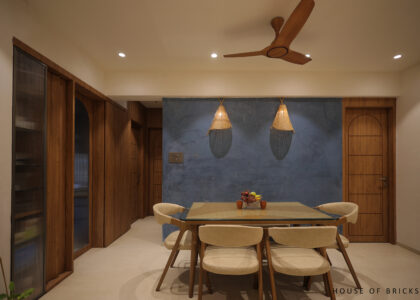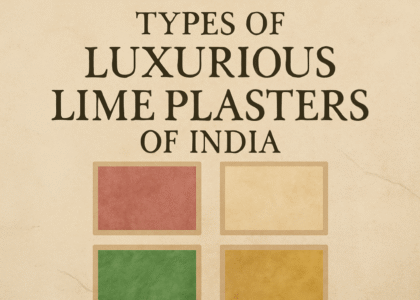Lime plaster has been used for centuries to create durable, breathable, and elegant wall finishes. Today, as architects, designers, and homeowners shift towards sustainable and aesthetically rich materials, lime plaster has reclaimed its place in modern construction. Its ability to adapt to different wall backgrounds makes it a preferred choice for both heritage restorations and contemporary interiors.
In this blog, we’ll explore how lime plaster interacts with various surfaces, the preparation required for each, and why it stands apart from other finishing materials.
Why Lime Plaster Stands Out
Before diving into backgrounds, let’s understand why lime plaster continues to hold relevance:
- Breathability: Unlike cement or synthetic finishes, lime plaster allows walls to breathe, reducing dampness and mold growth.
- Sustainability: Made from natural lime, it’s eco-friendly and recyclable.
- Thermal Comfort: How Lime Plaster Can Keep your home cool is one of its most remarkable qualities. It regulates indoor temperature naturally, making homes cooler in summer and warmer in winter.
- Aesthetic Appeal: It offers a timeless look that can be customized into finishes like polished marble-like Araish, rustic textures, or smooth modern surfaces.
Working with Different Backgrounds
Every wall material reacts differently to lime plaster. The key to a successful application is preparing the background correctly and choosing the right method.
1. Brick Walls
Brick is one of the most common substrates for lime plaster. Bricks absorb moisture well, making them a natural partner.
- Preparation: Brush off dust and soak the bricks lightly before plastering. This prevents rapid water absorption.
- Benefits: Lime plaster binds strongly, fills gaps, and creates a uniform finish.
2. Stone Walls
In heritage buildings and rural homes, stone walls are typical. Their irregularity requires more attention.
- Preparation: Clean the surface and apply a rough “scratch coat” to improve adhesion.
- Benefits: Lime plaster adjusts to uneven textures and complements the rustic appeal of stonework.
3. Concrete Surfaces
Modern constructions often rely on cement or concrete blocks. While sturdy, they aren’t as absorbent as brick or stone.
- Preparation: Roughen the surface mechanically or apply a bonding agent. Without this, lime plaster may not adhere properly.
- Benefits: Once bonded, lime plaster adds breathability and reduces the harshness of cement finishes.
4. Drywall or Gypsum Board
For interior walls, drywall is a popular background. Applying lime plaster here requires care.
- Preparation: Reinforce with a mesh or primer layer to avoid cracking.
- Benefits: Lime plaster provides a healthier alternative compared to synthetic coatings and adds longevity to drywall.
5. Heritage and Old Walls
Renovation projects often encounter old lime-washed or deteriorated walls.
- Preparation: Remove loose material and apply new coats in thin layers. Matching the historic composition ensures authenticity.
- Benefits: This maintains the building’s character while upgrading its strength and insulation.
Special Finishes: Araish Plaster
Among traditional lime finishes, Araish Plaster in India stands out for its polished elegance. This finish resembles marble and is often chosen for luxury interiors.
- Application: Multiple layers of lime and marble dust are applied, polished with smooth stones to achieve a reflective surface.
- Use Case: Perfect for feature walls, temples, and upscale residential projects.
Lime Plaster vs. Gypsum: Making the Right Choice
Many homeowners and contractors weigh options between lime and gypsum plaster. Here’s why lime still wins:
- Breathability vs. Sealing: Lime Plaster VS Gypsum shows that gypsum seals walls, trapping moisture, while lime keeps them breathable.
- Durability: Lime improves with age as it reabsorbs carbon dioxide, whereas gypsum is more brittle.
- Eco-Impact: Lime is natural, gypsum is industrially processed.
For those focused on long-term performance and indoor health, lime is the clear winner.
Choosing the Right Wall Finish
When designing high-end interiors, walls are more than just structural elements—they become canvases. If you’re considering luxury finishes, consult an Architectural Design Consultant.
They can help you evaluate which surfaces are suitable, guide you in choosing the right Wall For Luxury Interior, and ensure your lime plaster application complements the design theme.
Practical Tips for Success
- Test First: Always apply a small sample area to study how the plaster bonds with the background.
- Control Moisture: Too much or too little water can weaken the finish. Keep surfaces damp but not soaked.
- Layering: Apply in multiple coats rather than one thick layer to avoid cracks.
- Curing: Allow each layer to set before applying the next. Lime requires patience, but the results are worth it.
Why Professionals Matter
While DIY methods exist, working with lime plaster demands skill. A professional Lime Plaster Service ensures that backgrounds are prepared properly, the right mixes are used, and the final finish lasts for decades.
The Future of Lime Plaster
As eco-friendly construction gains ground, lime plaster is becoming a cornerstone material. Architects are reviving old techniques while blending them with modern applications. Whether you’re restoring a centuries-old haveli or building a minimalist city home, lime plaster adapts to every vision.
Conclusion
Working with different backgrounds for lime plaster applications is about understanding the nature of the wall and preparing it correctly. From brick and stone to concrete and drywall, each surface can host lime plaster with the right care. Special finishes like Araish enhance its luxury appeal, while its eco-friendly and breathable qualities make it far superior to synthetic options.
Whether you’re looking to restore heritage charm or create a modern masterpiece, lime plaster is a versatile, sustainable, and beautiful choice. And with expert services and design consultancy, you can be assured of results that combine durability with timeless elegance.







